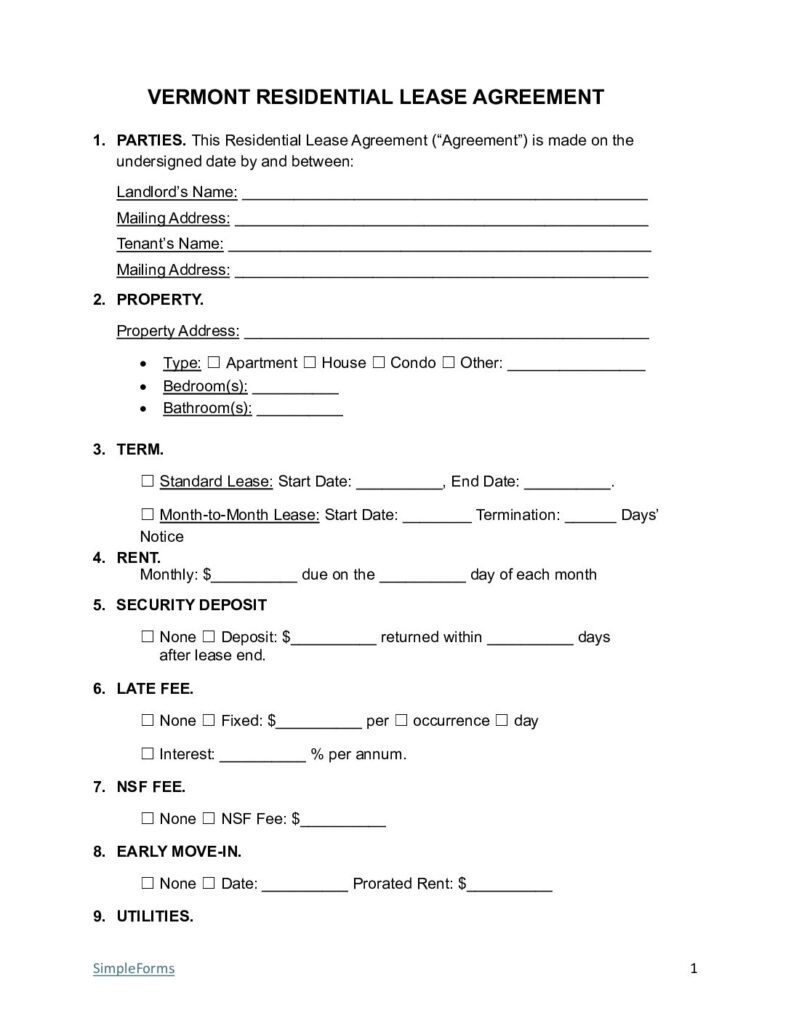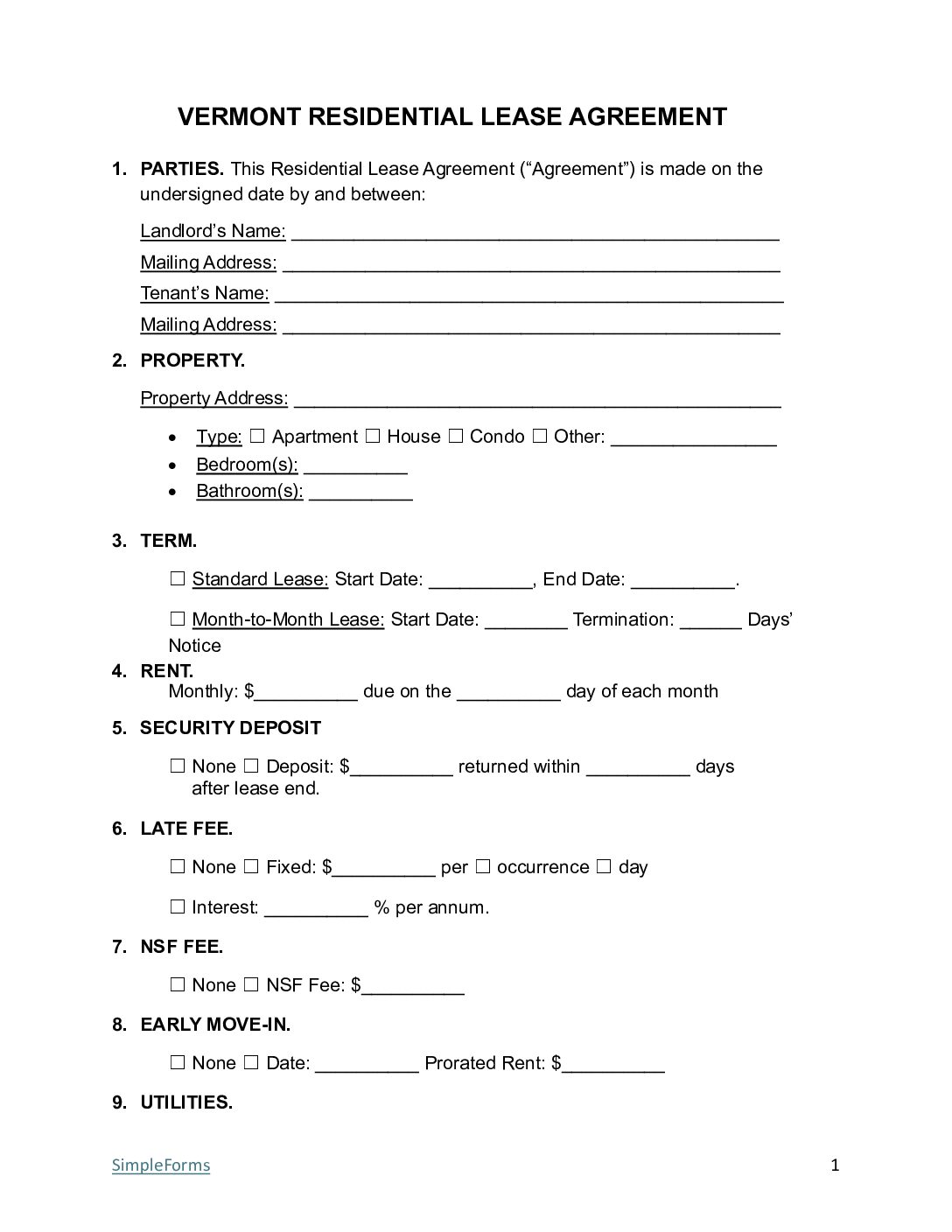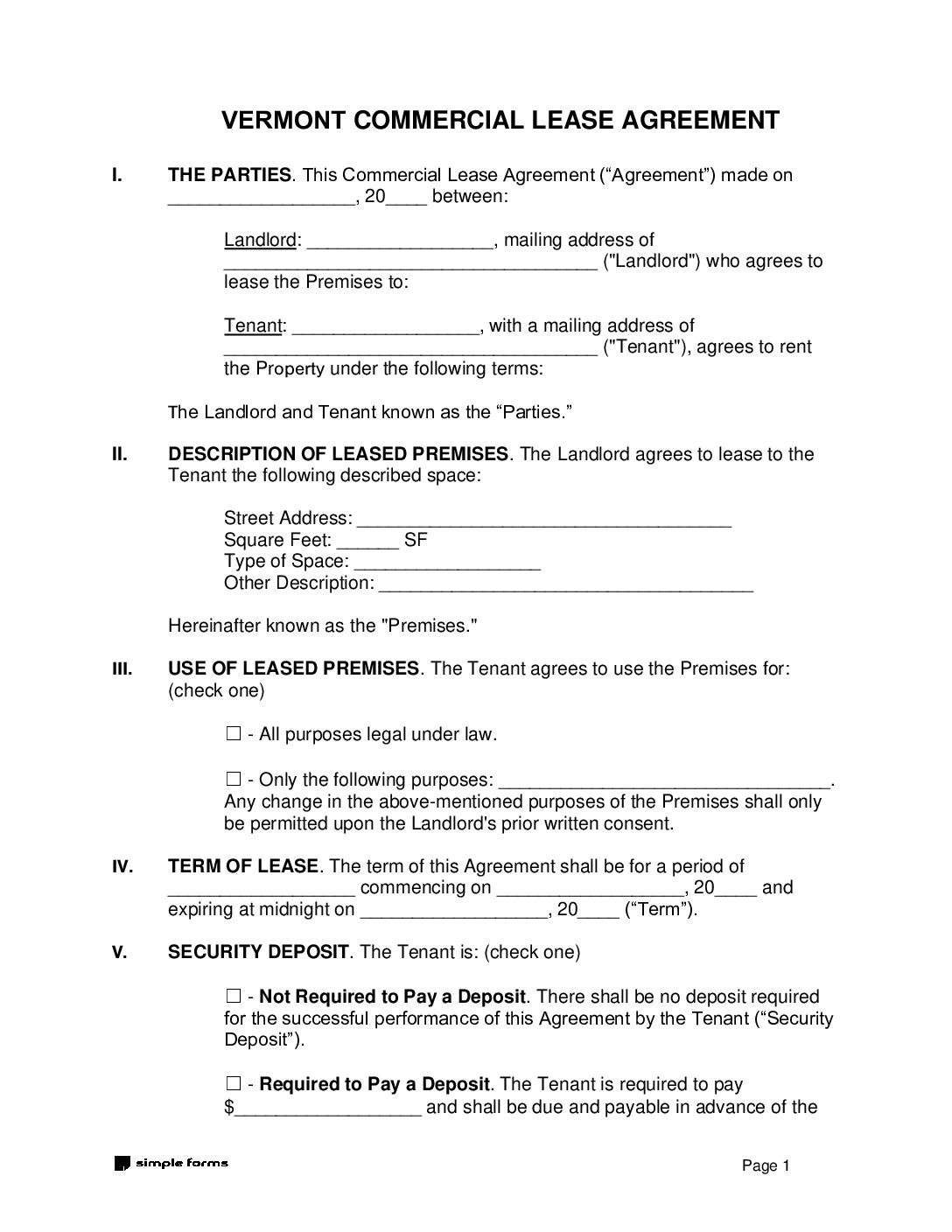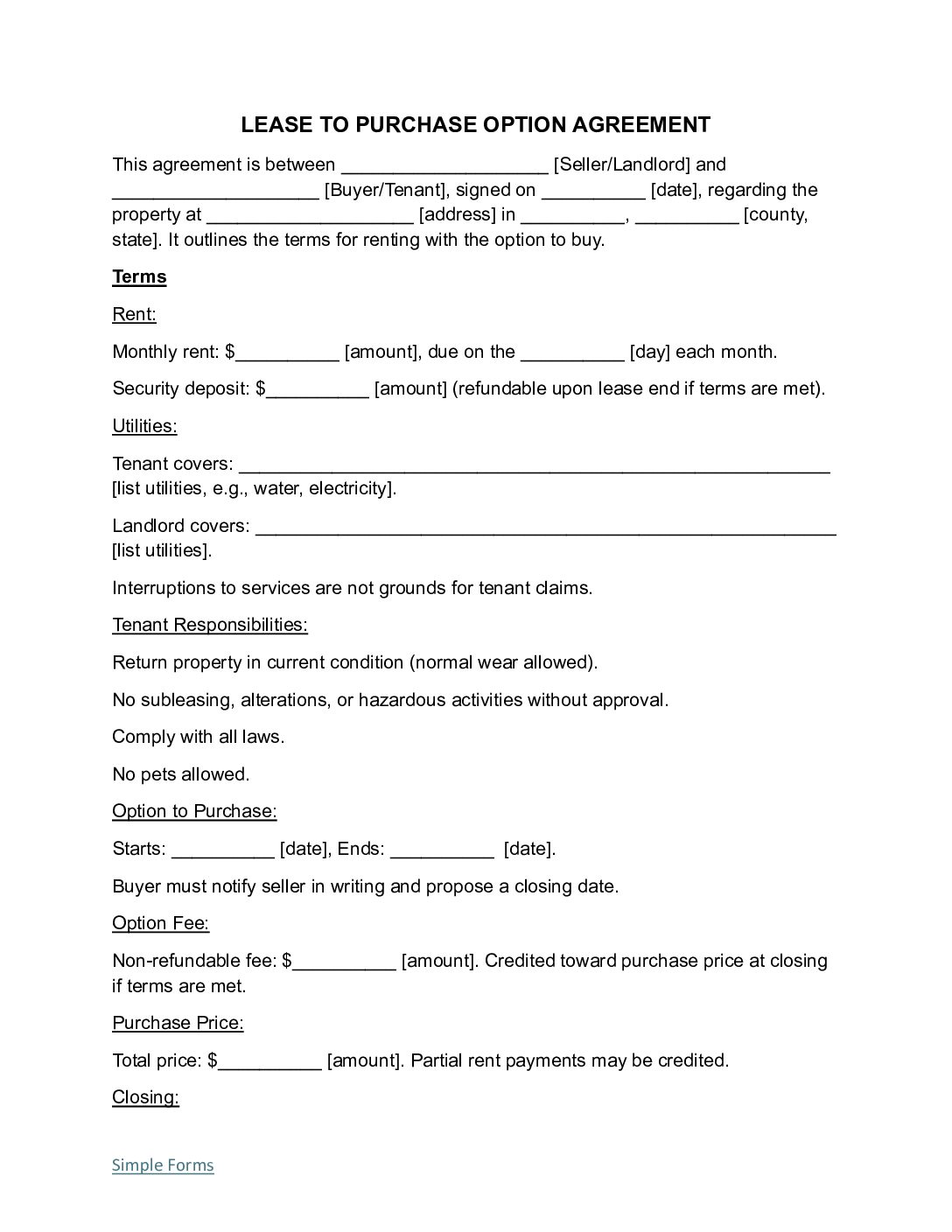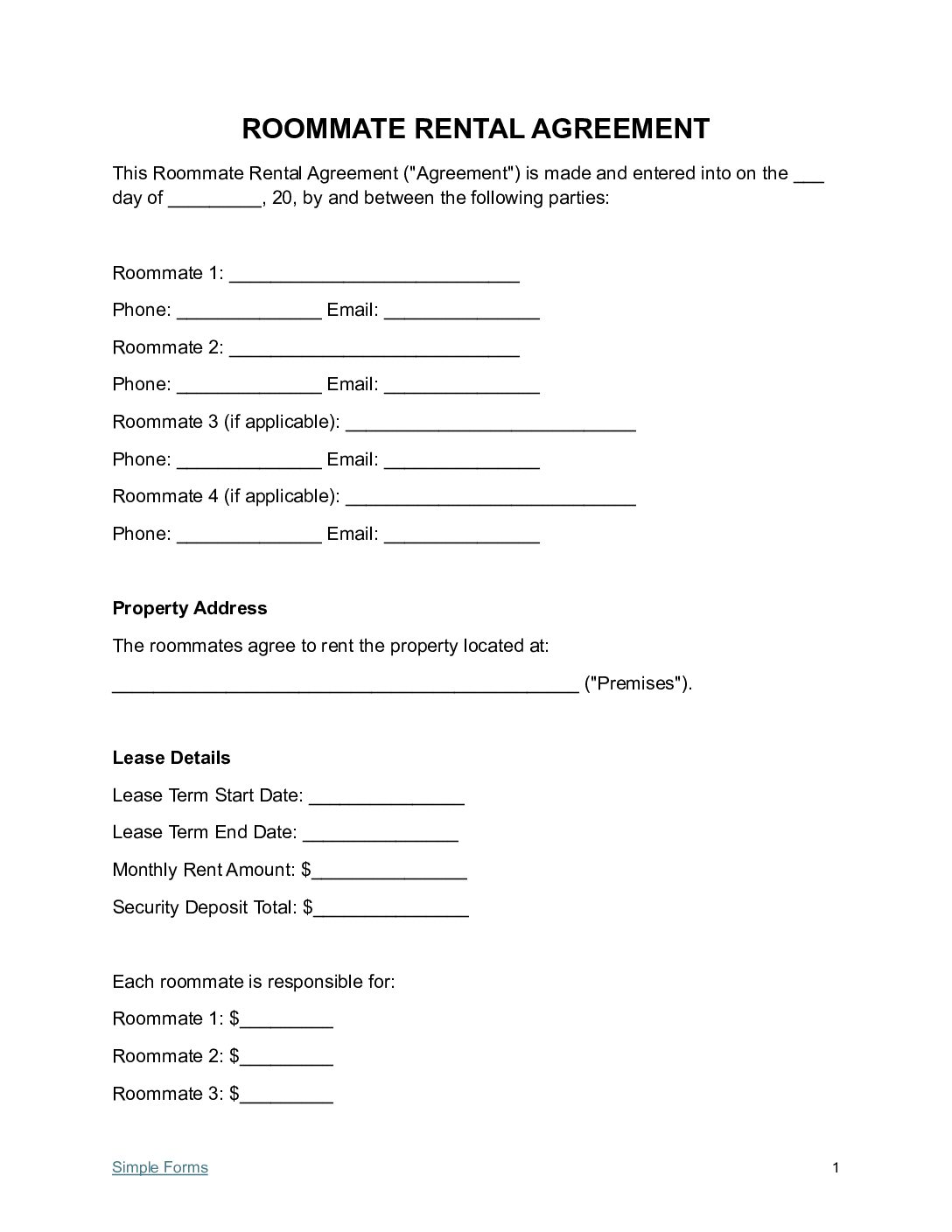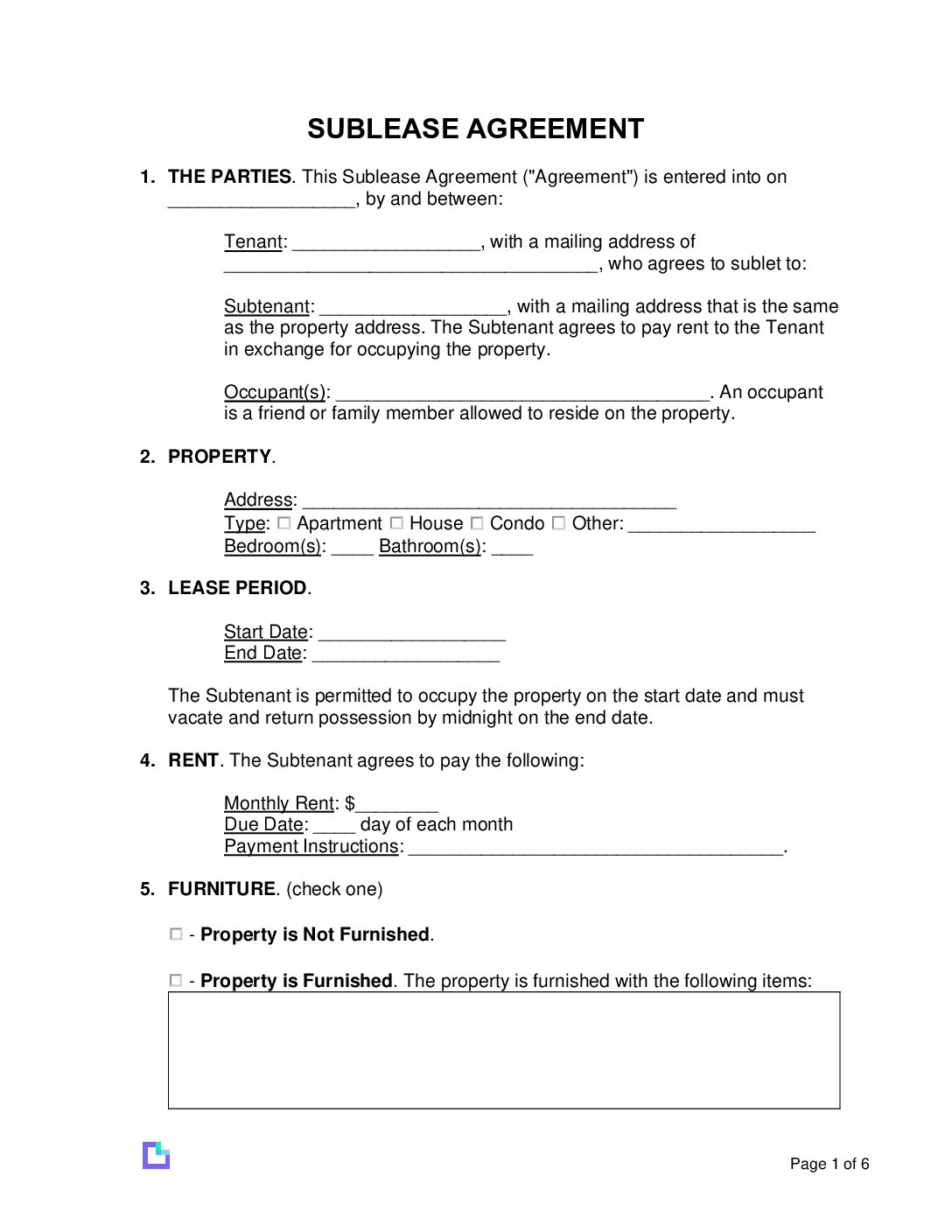Rental Application Form – Landlords request from Tenants to fill out in order to run a background check and employment history prior to signing the Vermont rental lease agreement template to make sure that the Tenant can pay the monthly rent amount.
By Type (6)
| Residential Lease Agreement – A simple, standard one-year lease form for renting a residential property. This lease outlines the rights and responsibilities of both the landlord and tenant, including rent payments, duration, and maintenance terms. Includes Mobile Home Park St. Albans Vermont Lease Agreement Download: PDF | Word |
|
| Commercial Lease Agreement – A legally binding contract used to lease retail, office, or industrial space. Suitable for business purposes, this agreement defines rent terms, operating costs, and lease duration. Download: PDF |
|
| Month-to-Month Lease Agreement – A flexible rental contract that continues on a monthly basis until either the landlord or tenant gives proper notice to terminate. Ideal for temporary or uncertain housing needs. Download: PDF |
|
| Rent to Own Lease Agreement – This type of residential lease adds the option for tenant to purchase the property. Download: PDF |
|
| Roommate Lease Agreement – Also known as a Lease-to-Own Agreement, this residential lease includes an option for the tenant to purchase the property at the end of the lease term. An option for tenants working toward homeownership. Download: PDF |
|
| Residential Sublease Agreement – A form used when the original tenant (sublessor) rents out all or part of the rental property to another person (subtenant). Includes all required terms that must comply with the original lease agreement. Download: PDF |
What does the Vermont Rental Lease Agreement Template Cover?
This Vermont rental lease agreement includes the following details for landlords and tenants in Vermont:
- Residential Rental Agreements Act (RRAA),
- Security Deposit Laws
- Lease Termination Rules with No Payment Penalty
- Landlord’s Right to Access the Property
- Rent Due Dates and Late Fees
- Eviction Process
- Property Maintenance Requirements: Rental Housing Health and Satefy Code
- Required Disclosure Forms
- Abandonment by Tenant
Residential Rental Agreements Act (RRAA),
Security Deposit Laws
- Return -The Landlord must return deposit within 14 days of the lease end date. [2]
- Itemized Deductions – An itemized list must be given to the Tenant if any deductions are taken out within 14 days of the lease end date.
- Maximum Deposit – There is no limit on the amount Landlords can request.
Lease Termination with No Payment Penalty
- Month-to-month: – 30-day notice for Tenant who has rented for less than two (2) years; 60-day notice for Tenants who have been in rental for more than two (2) years. [3]
- Week-to-Week – 21-day notice.
- No notice required: If both parties mutually agree in writing.
Landlord’s Access to the Rental Property Notices
Landlords must give Tenants a 48-hours notice prior entry to rental unit unless its an emergency. [4]
Eviction Process for Landlords
- Notice to Pay or Quit – Landlords can give Tenants a 14-day notice to quit if rent goes unpaid.[7]
Property Maintenance Requirements: Rental Housing Health and Safety Code
- Landlords are required to keep rental properties safe and clean and adhere to the Rental Housing Health and Safety Code, which are overseen by the local municipal Heath Officers to the Division of Fire Safety. [8]
- The Rental Health and Safety Code covers regulations on sanitation facilities, pest and bedbug control, heating, natural and mechanical ventilation, lighting and electricity, structural elements, mobile homes, and general responsibilities.
Required Disclosure Form
Landlords must disclose the following information to Tenants:
- Lead-Based Paint Disclosure Form and EPA Brochure – Landlords of properties built before 1978 must inform tenants about the possible presence of lead-based paint and provide an EPA brochure on the health hazards. [9]
Abandonment by Tenant
- Absence – Vermont does not set a rule for the exact period of time the Tenant needs to be absent from the property rather based on common sense – the first sign is usually when the Tenant is absent for a longer period of time than normal and the rent is unpaid. [10]
- Unclaimed Property – The Landlord must store items left behind from the Tenant for at least 60 days after the Tenant receives a notice to claim belongings. [11]
